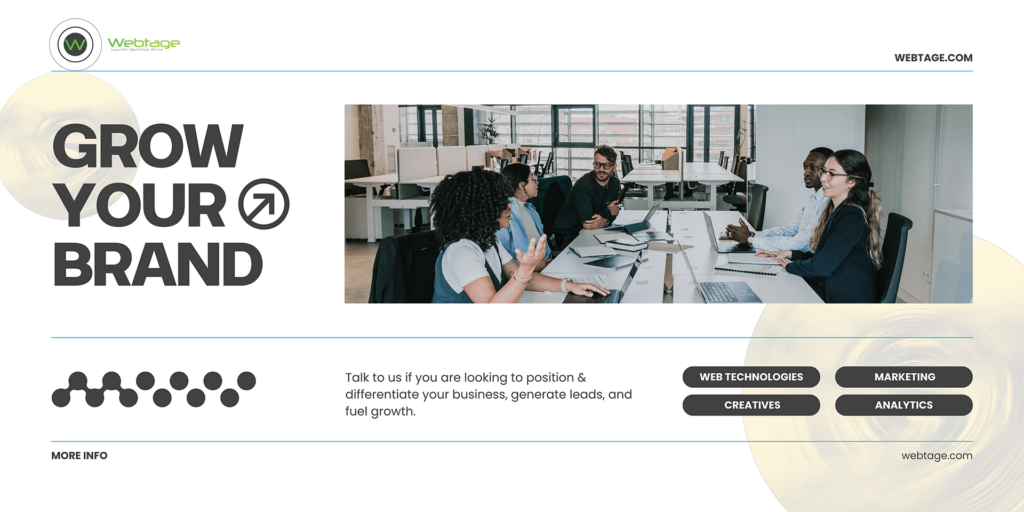
Forrester Data indicates that B2B organizations “have really expanded their in-house agency, their centers of excellence, but that trend has really peaked in 2020.”
Reason? In times of downturn, companies are finding it hard to justify the costs of maintaining large, in-house marketing teams.
Downturn or not, experienced and vetted outsourced agencies are an excellent option for companies looking to step up their revenue and build a better-known brand. In the aftermath of COVID, where work-from-home has become more acceptable, there has been a rise of outsourced ‘virtual’ agency, which offers additional benefits when compared to a traditional outsourced marketing agencies.
What is an Outsourced ‘Virtual’ Agency and Why It Works so Well for B2B & Other Clients?
An outsourced, virtual agency is boutique agency comprised of partnered professionals and full-time staff. This means full engagement from experienced team members which continues beyond initial few months of the project. Unlike traditional, brick-and-mortar marketing agencies, our partners and employees work from their own spaces. And unlike many big name agencies, we do not hand-off work to juniors and are fully accountable to our clients’ needs at all times.
Looking for an analogy? At Webtage, we consider ourselves a digital version of George Cloney’s ‘Ocean Eleven.’ Instead of specialist conmen, we are a group of specialist digital experts who are on top of their game.
What does this mean to you, the client?
Stable network – Unlike agencies with high turnovers and high costs, a virtual agency works lean and works well because we have a shared work history, deep trust, and common work ethic that enables us to regularly & successfully work together. Many of us work full time on your marketing campaigns, while “our partners” join us for specific project needs.
For instance, you may need a specialized motion graphic production team for an sales-enablement video. We’ve got you covered with our partners. Need a ad strategist who specializes in Demand Side Platforms (DSPs)? We’ve got you covered as well!
Whether your outsources team consists of our employees or partners, you can always be assured of professional work process, non-disclosures, timely deliverables, and world-class services.
Highly vetted & Highly Experienced – Our network consists of experienced and highly specialized experts and you never have to worry about your project being handed over to a junior staff at a traditional agency.
We have a very rigorous process of vetting our partners and employees. Just like you have full control over your recruitment process and do your due diligence, so do we.
Our global team is comprised of creative, fun, passionate, and analytical minds and we love the work that we do. Our work is world-class, out of the box, and has always succeeded in moving the business needle. Along the way, we’ve won the admiration of our industry peers and deep appreciation from our clients.
Amongst the adjectives our clients and partners have used for us: professional, prompt, effective, polished, delightful, patient, gracious, skills nonpareil, amazing, dedicated, sharp, attentive, responsive, knowledgeable, the best and we could go on but here is the more important part. We have more years of combined work experience than we would like to acknowledge, lest we feel ancient!
A globally distributed team with deep agency experience and a keen ability to assess business situations and create out-of-the-box hooks to capture the imagination of the audience, you can be assured that only the very experienced and brilliant minds will work on your projects. We work lean and work passionately.
Flexible and scalable – Our extended network of fraternity members allows us the ability to scale up and down.
During downturns, we can scale back our operations to support your operational continuity. We also switch from a retainer model to a project or hour-based invoicing, if a situation so demands.
Cost Savings – here’s our value proposition: for the cost of one full-time employee (FTE), you have the skills and services of an entire marketing team working for you!
How do we do this?
- Well, to begin with, we work lean. We work out of our own spaces, eliminating the real-estate and utilities costs associated with having a physical location.
- We also rely on cost-differentials between different teams spread across the globe. That being said, we always are fair to the expectations of our employees and partners. We are a highly ethical and empathetic organization and we believe in a win-win situation.
- Finally, we distribute our time between multiple clients, while compromising on none. This means, we work hard and we deliver, every single time.
Long-term Revenue Growth – We analyze marketing strategies, marketing operations, and marketing returns through the lens of revenue generation.
Due to our lean process, lean pricing structure, smart strategies, impeccable execution and tight project management, we are consistenly able to bring multi-fold returns on marketing investment. We love to show the results via our clean and interactive marketing dashboards as well as deeper insights by providing lead intelligence and lead reports.
So How Do We Keep Up With Our Clients’ Internal Teams & Develop a Nuanced Marketing Strategy?
We understand that clients may have a sense of unease about bringing in an outside team to manage their marketing efforts. However, we have perfected a process that allows us to become an integral part of your organization. This process involves:
-
-
DISCOVERY SESSION
This is where we define your marketing objectives (i.e., establish thought leadership, increase prospect database, raise awareness about a particular solution, promote an event etc), identify buyer personas (what are their needs and motivations) and buyer journeys. This helps us craft a strategy that is closely aligned with your business needs, your competitive market and buyer persona.
-
SUBJECT MATTER KNOWLEDGE EXTRACTION
We follow a knowledge extraction process where we interview Subject Matter Experts (SMEs) on a regular basis, identify influencers, study hashtags and develop fluency in topics of interest, conversation nuances, industry jargon, as well as gaps in conversation.
And we do this through weekly, bi-monthly or monthly meetings. We also work closely with our clients’ sales team to ensure there is common ground and mutual understanding between marketing & sales.
-
INVENTORY & AUDIT
We perform a quantitative and qualitative assessment of your existing marketing campaigns, content pieces & collateral that you already own. We evaluate the current state of affairs, returns on investment and compare it to your business goals. How are the campaigns performing? Are they generating engagement and conversions? We conduct trend analysis of assets that are performing well & poorly.
This process allows to work in a contextualized space.
-
GAP ANALYSIS & CONTENT STRATEGY
Based on the discovery, knowledge extraction, and audits, we create a core strategy that will be the grounding point that all stakeholders will agree upon. Then we will create hooks and themes, followed by a marketing plan mapped to objectives and buyer’s journey.
-
CRAFT & MARKET
Here is where we craft your content, marketing collateral and your campaigns, lending to them the levers required to strike a chord with your audience, build your thought leadership, and compel them to engage with your brand.
-
REGULAR CHECK-INS –
-
We practice a well-thought out, modular process that helps you get the maximum returns on your investment. There is always scope to omit certain areas if you already developed those in-house. Conversely, we may want to dive deeper in certain other areas, if that’s seen necessary by all stakeholders.
Regular check-ins via regularly scheduled virtual meetings, email and phone conversations always keep us looped in and available for our clients’ needs.
Still on the Fence?
See many of Webtage’s outsourced web technologies & marketing success stories here. Read our testimonials, see the awards we have won, and see the industries we service.
Our digital build & market experience spans multiple industries, but our strongest strengths are B2B/technology, education, healthcare, B2C, and professional services. Our clients achieve sustained visibility because we conduct online campaigns the solid way. We are here to build a relationship with your business and work with you as your creative, marketing & technology partner.



